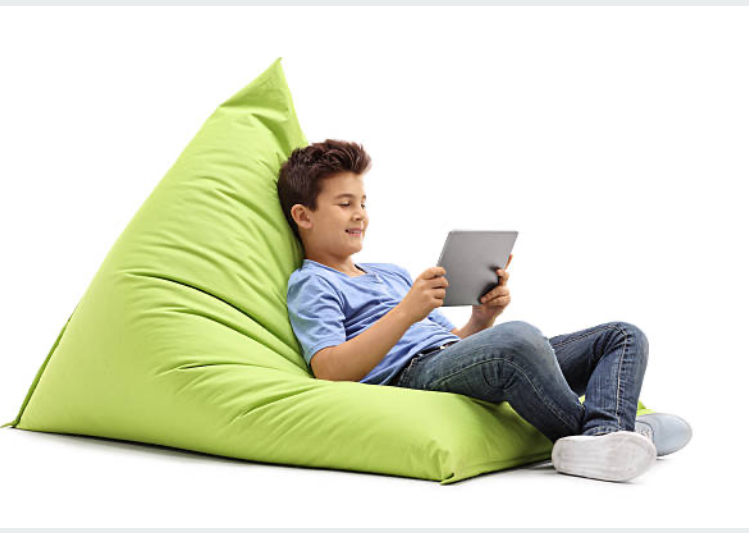In our increasingly busy world, finding a personal sanctuary – a space where you can truly relax, regulate, and feel at peace – is more important than ever. For many, especially those with sensory processing differences, autism, ADHD, anxiety, or even just high levels of stress, traditional furniture doesn’t quite cut it. Enter the wonderful world of sensory chairs.
What Are Sensory Chairs?
At their core, sensory chairs are pieces of furniture engineered to provide targeted sensory input. Unlike a standard armchair, they often incorporate elements like deep pressure, gentle movement, enclosure, or varied textures to help individuals regulate their nervous systems. They create a “just right” environment where one can process sensory information more effectively, leading to improved focus, reduced anxiety, and increased comfort.
Why We Love Them
We absolutely adore sensory chairs for a multitude of reasons:
- Instant Calming Effect: They act like a warm hug, providing the proprioceptive input many bodies crave.
- Safe Space Creation: For those feeling overwhelmed, a sensory chair can be a private, secure retreat from too much stimulation.
- Promotes Self-Regulation: They empower individuals to manage their own sensory needs, fostering independence and self-awareness.
- Enhances Focus & Learning: By helping to calm an overstimulated system or provide needed input, they can create an optimal state for concentration.
- Versatile for All Ages: From children needing a quiet corner in a classroom to adults seeking relief after a stressful day, sensory chairs benefit a wide range of individuals.
- Inclusive Design: They help make spaces more inclusive and supportive for diverse sensory profiles.
Sensory Benefits Galore!
Sensory chairs offer a rich tapestry of benefits, addressing various sensory systems:
- Proprioceptive Input (Deep Pressure): Many sensory chairs are designed to provide firm, even pressure. This “deep pressure input” is incredibly organizing and calming for the brain, similar to a hug or a compression garment. It helps with body awareness and grounding.
- Vestibular Input (Movement): Chairs that rock, swing, or gently bounce offer vestibular input, which affects balance and spatial awareness. For some, this rhythmic movement is incredibly soothing and helps regulate alertness levels. For others, it can be alerting and help with focus.
- Tactile Input (Texture): The materials used – from soft, plush fabrics to smooth, durable PVC – can provide pleasant tactile sensations, contributing to overall comfort and sensory satisfaction.
- Visual & Auditory Reduction (Enclosure): Many designs offer an enclosed or semi-enclosed space, which significantly reduces visual clutter and ambient noise, preventing overstimulation and promoting focus.
- Improved Body Awareness & Posture: The supportive nature of some chairs can encourage better posture and a greater sense of where one’s body is in space.
- Emotional Regulation: By providing a safe, predictable, and comforting environment, sensory chairs directly assist in reducing anxiety, managing meltdowns, and fostering a sense of emotional well-being.
Which Kind of Sensory Seekers Would Like Them?
Sensory chairs are incredibly versatile and can benefit a wide range of sensory profiles:
- Proprioceptive Seekers: Individuals who crave deep pressure, enjoy tight hugs, or like to push/pull heavy objects will absolutely adore chairs that offer firm compression or a “cocoon” like feel. These chairs provide the intense body input they need to feel regulated.
- Vestibular Seekers (Calming): Those who find gentle rocking, swinging, or swaying movements soothing and organizing will thrive in a swinging pod or a rocking chair. This rhythmic input can help them calm their system.
- Vestibular Seekers (Alerting): For others, controlled swinging or bouncing can provide the alerting input they need to focus and stay engaged.
- Tactile Seekers (Specific Textures): While less about the seeking and more about comfort, chairs with appealing textures (soft, fuzzy, smooth) can be very comforting for those sensitive to touch or who enjoy distinct tactile experiences.
- Sensory Avoiders (Over-Responsivity): Surprisingly, sensory chairs are also fantastic for those who are easily overstimulated. The enclosed nature of many designs helps reduce overwhelming visual and auditory input, creating a safe, low-stimulus haven.
- Individuals with General Anxiety or Stress: Even if you don’t have a diagnosed sensory processing difference, if you find yourself feeling overwhelmed, anxious, or needing a quiet space to decompress, a sensory chair can be a game-changer.
Types of Sensory Chairs
The world of sensory chairs is diverse, with options to suit almost any need:
- Bean Bag Chairs: A classic for a reason! They mold to the body, providing incredible proprioceptive input and a sense of being enveloped. They come in various sizes and materials, offering different levels of firmness and texture.
- Cocoon/Pod/Egg Chairs: These chairs offer an enclosed or semi-enclosed space, often with a spherical or egg-like shape. They create a private, womb-like sanctuary that helps reduce visual and auditory distractions, ideal for sensory avoiders or those needing a quiet retreat. Some even swing!
- Swinging Chairs & Hammocks: From hanging egg chairs to full-body hammocks, these provide rhythmic vestibular input that can be incredibly calming, organizing, or alerting depending on the movement. The gentle sway can help soothe an overactive nervous system.
- Peapod/Compression Chairs: Specifically designed for deep pressure, these inflatable tubes allow children or adults to “squeeze” themselves inside, providing intense, full-body proprioceptive input. They mimic the feeling of a comforting hug.
- Inflatable Sensory Chairs: Lightweight and often bouncy, these can offer a different kind of sensory input, combining bouncy movement with a soft, yielding surface.
- Rocker & Glider Chairs: These offer gentle, rhythmic back-and-forth movement. They are often less intense than swings but still provide soothing vestibular input, perfect for reading or quiet contemplation.
- Wobble/Spinning Chairs: While not strictly “sensory chairs” in the traditional sense, chairs that allow for movement can provide vestibular and proprioceptive input, helping to maintain focus and energy for some.
Our Top-Rated Picks
While specific product recommendations can vary wildly based on individual needs and budget, here are the categories of sensory chairs that consistently receive top praise for their effectiveness:
- The Sensory Soft Squeeze Seat
- Unmatched proprioceptive input, offering a full-body squeeze that is profoundly calming and organizing for seekers.
- The Sit and Spin Sensory Spinning Chair
- Excellent vestibular input of spinning, perfect for de-escalation and quiet time. The spinning chair is definitely a favorite.
- The Amazon Basics Memory Foam Bean Bag Chair
- Molds perfectly to the body for excellent proprioceptive feedback, incredibly versatile for lounging, reading, or just decompressing. Washable covers!
Similar Things People Might Like
If you find the concept of sensory chairs appealing, you might also benefit from these related sensory tools and environments:
- Weighted Blankets: Provides deep pressure input, similar to a sensory chair, for calming and organizing.
- Sensory Swings (Platform, Lycra, Pod Swings): Offers a wider range of vestibular input and body positioning than a static chair.
- Sensory Tents/Dens: Create a designated quiet, enclosed space for retreat and reduced stimulation.
- Noise-Cancelling Headphones: Excellent for auditory sensitivity, allowing for filtering out overwhelming sounds.
- Tactile Fidget Toys: Provide discreet sensory input for hands, helping with focus and self-regulation.
- Yoga Ball Chairs: Offer active seating that can provide subtle movement and proprioceptive input throughout the day.
- Dark Spaces/Calm Down Corners: Designating a low-stimulus area in any room can be incredibly beneficial.
Sensory chairs are more than just furniture; they are powerful tools for self-regulation, comfort, and well-being. By understanding their benefits and the different types available, you can find the perfect “calm spot” to support your — or your loved one’s — unique sensory needs.


